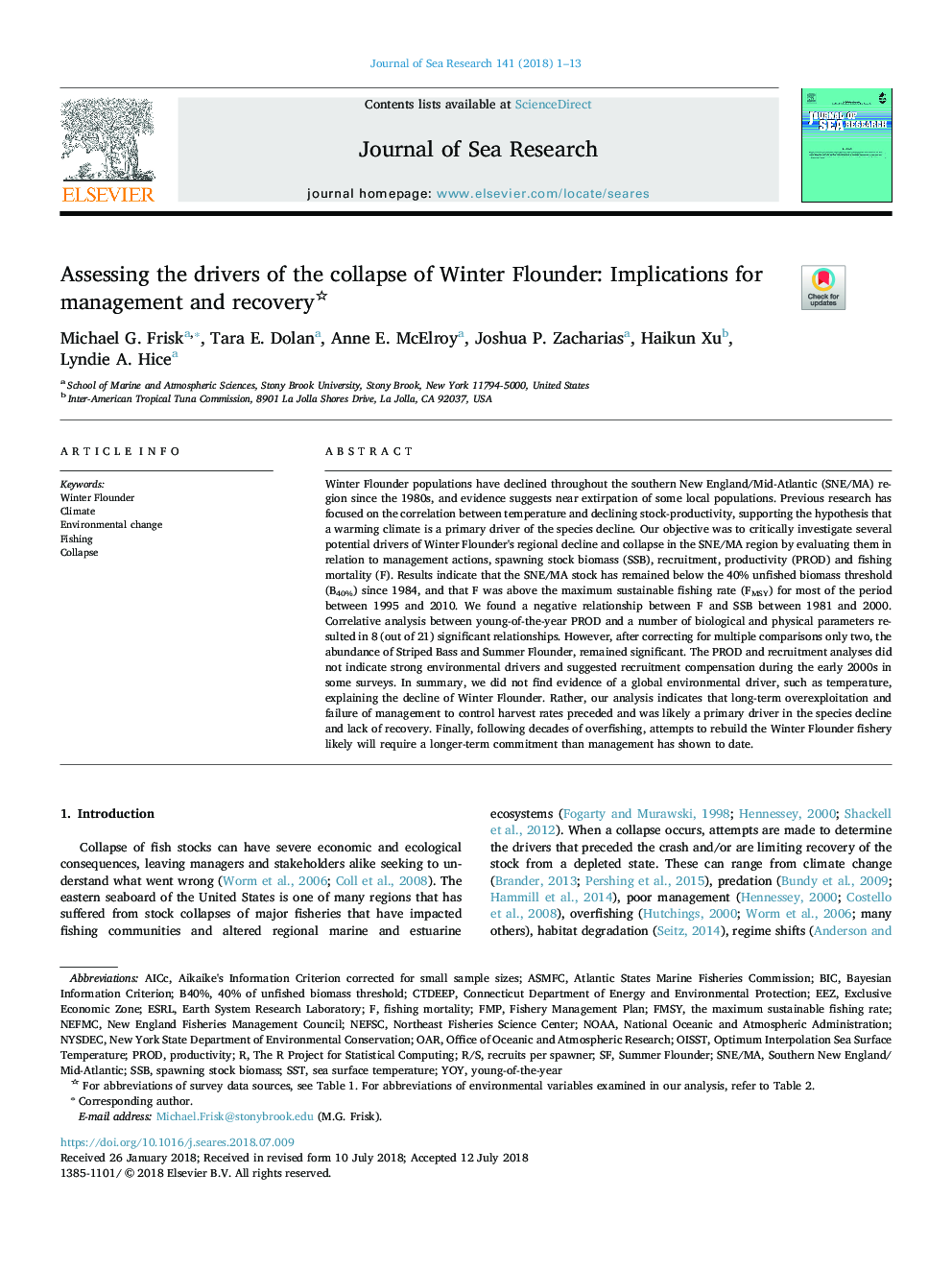| کد مقاله | کد نشریه | سال انتشار | مقاله انگلیسی | نسخه تمام متن |
|---|---|---|---|---|
| 8946205 | 1645336 | 2018 | 13 صفحه PDF | دانلود رایگان |
عنوان انگلیسی مقاله ISI
Assessing the drivers of the collapse of Winter Flounder: Implications for management and recovery
ترجمه فارسی عنوان
ارزیابی رانندگان فروپاشی زمستان شلاق: اثرات مدیریت و بهبودی
دانلود مقاله + سفارش ترجمه
دانلود مقاله ISI انگلیسی
رایگان برای ایرانیان
کلمات کلیدی
OARBICPRODEEZFMPSSBYOYSSTAICcR/SNOAAClimate - اقلیم Productivity - بهرهوری Environmental change - تغییرات محیطیYoung-of-the-year - جوان سالهWinter flounder - خرچنگ زمستانیSea surface temperature - دمای سطح دریا، SSTSpawning stock biomass - زیست توده زیستی نشتیNational Oceanic and Atmospheric Administration - سازمان ملی اقیانوسی و جویCollapse - سقوط - فروپاشیSummer Flounder - شلاق تابستانیFishing - صید ماهیFishing mortality - مرگ و میر ماهیگیریBayesian information criterion - معیار اطلاعات بیزیExclusive economic zone - منطقه اقتصادی منحصر به فرد
موضوعات مرتبط
مهندسی و علوم پایه
علوم زمین و سیارات
اقیانوس شناسی
چکیده انگلیسی
Winter Flounder populations have declined throughout the southern New England/Mid-Atlantic (SNE/MA) region since the 1980s, and evidence suggests near extirpation of some local populations. Previous research has focused on the correlation between temperature and declining stock-productivity, supporting the hypothesis that a warming climate is a primary driver of the species decline. Our objective was to critically investigate several potential drivers of Winter Flounder's regional decline and collapse in the SNE/MA region by evaluating them in relation to management actions, spawning stock biomass (SSB), recruitment, productivity (PROD) and fishing mortality (F). Results indicate that the SNE/MA stock has remained below the 40% unfished biomass threshold (B40%) since 1984, and that F was above the maximum sustainable fishing rate (FMSY) for most of the period between 1995 and 2010. We found a negative relationship between F and SSB between 1981 and 2000. Correlative analysis between young-of-the-year PROD and a number of biological and physical parameters resulted in 8 (out of 21) significant relationships. However, after correcting for multiple comparisons only two, the abundance of Striped Bass and Summer Flounder, remained significant. The PROD and recruitment analyses did not indicate strong environmental drivers and suggested recruitment compensation during the early 2000s in some surveys. In summary, we did not find evidence of a global environmental driver, such as temperature, explaining the decline of Winter Flounder. Rather, our analysis indicates that long-term overexploitation and failure of management to control harvest rates preceded and was likely a primary driver in the species decline and lack of recovery. Finally, following decades of overfishing, attempts to rebuild the Winter Flounder fishery likely will require a longer-term commitment than management has shown to date.
ناشر
Database: Elsevier - ScienceDirect (ساینس دایرکت)
Journal: Journal of Sea Research - Volume 141, November 2018, Pages 1-13
Journal: Journal of Sea Research - Volume 141, November 2018, Pages 1-13
نویسندگان
Michael G. Frisk, Tara E. Dolan, Anne E. McElroy, Joshua P. Zacharias, Haikun Xu, Lyndie A. Hice,
